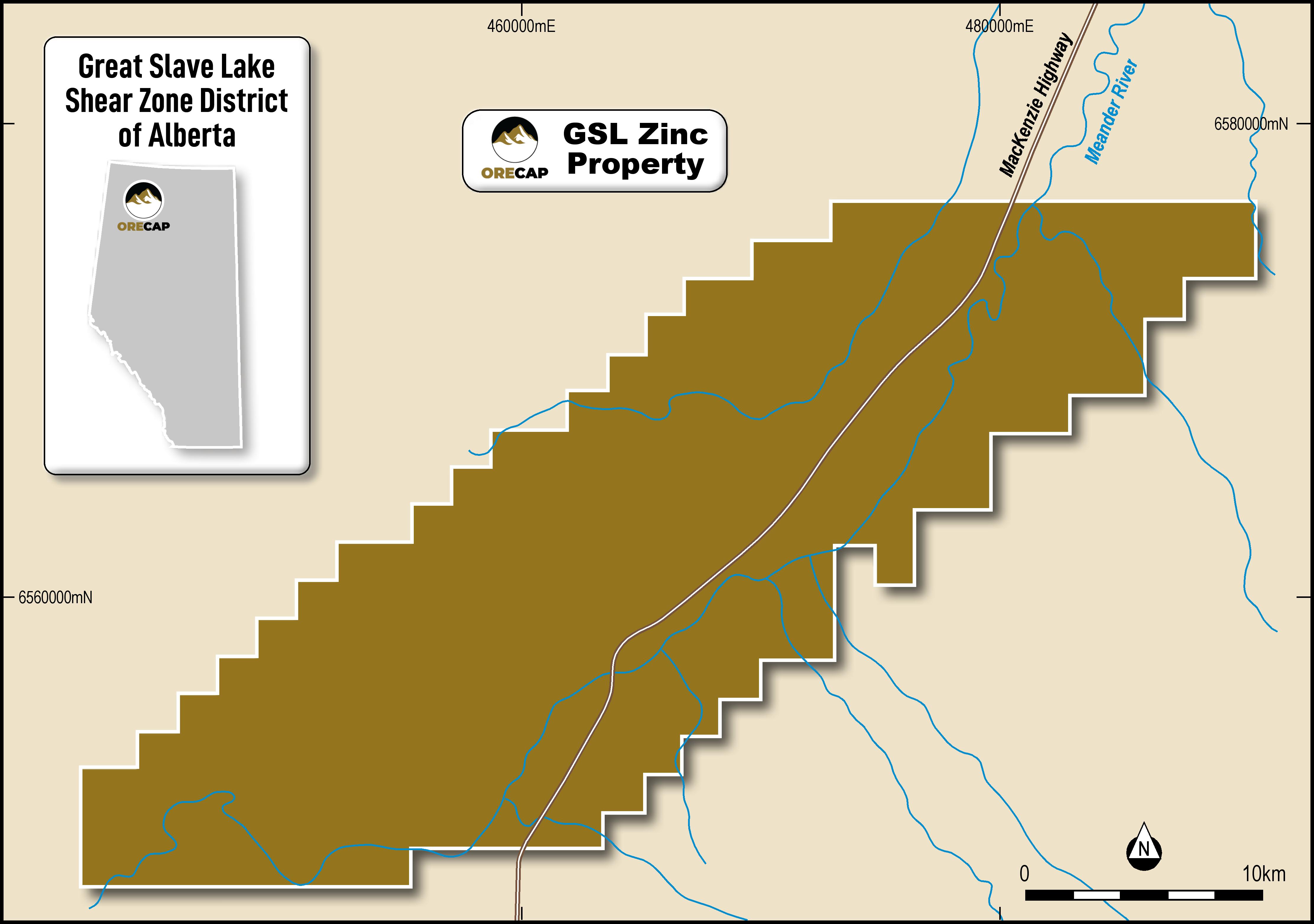GSL Zinc Project
About GSL ZINC
GSL represents a grassroots generative opportunity from Orefinders that is based on data that is publically available. The area of GSL is covered by glacial till ranging from 15-50 metres in depth, with few outcrops, and our exploration thesis has never been effectively tested. GSL is underlain by sedimentary sequences of the Western Canada Sedimentary basin beneath relatively shallow till cover. Cretaceous-aged (80 million years) shales and sandstones are underlain by Devonian-aged (370 million years) limestones and dolomites. The Devonian sequence is known to be stratigraphically equivalent to the Pine Point district.
Location and Infrastructure
GSL is a 60,000-hectare property in Northwest Alberta, along the Great Slave Lake Shear Zone in Western Canada Sedimentary. GSL has excellent access and infrastructure as it sits along the McKenzie highway and has a railroad crossing the claims. GSL is within the Great Slave Lake Shear Zone in Western Canada's Sedimentary Basin, which hosts the Pine Point zinc camp 330 kilometres northeast.
Near Term Plans
ORECAP will seek to immediately begin a 20-hole, 1,100 metres RC drill program of widely spaced, shallow holes through the glacial sediments and into the bedrock. This drill program aims to trace the sphalerite in till anomaly and sample the Cretaceous bedrock beneath the till. Sedex deposits can be quite large and flat-lying, hence any discovery would be very favourable to open pt mining.
GSL Zinc Investor Presentation
GSL ZINC Anomaly
The zinc anomaly was discovered by the Geological Survey of Canada (GSC Open File 5121; Alberta Special Report 7, 2006). The discovery consisted of numerous sphalerite grains in 30 Kg till samples ranging from values of less than 30 grains in samples external to the anomalous area and grain counts of up to 1047 grains in samples within the anomalous area. Other studies have indicated the likely ice direction of the most recent glacial movement, and the program is designed to systematically sample shallow till samples moving “up ice” until the anomaly ends, thus indicating proximity to the source of sub-cropping zinc mineralization.




